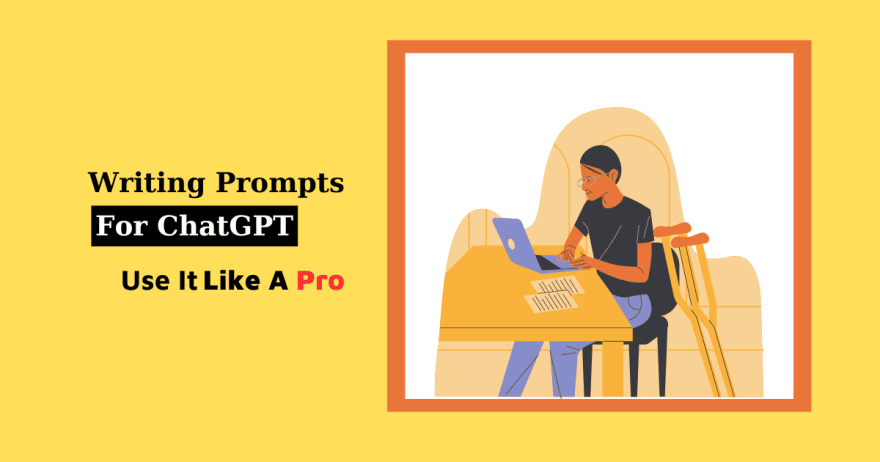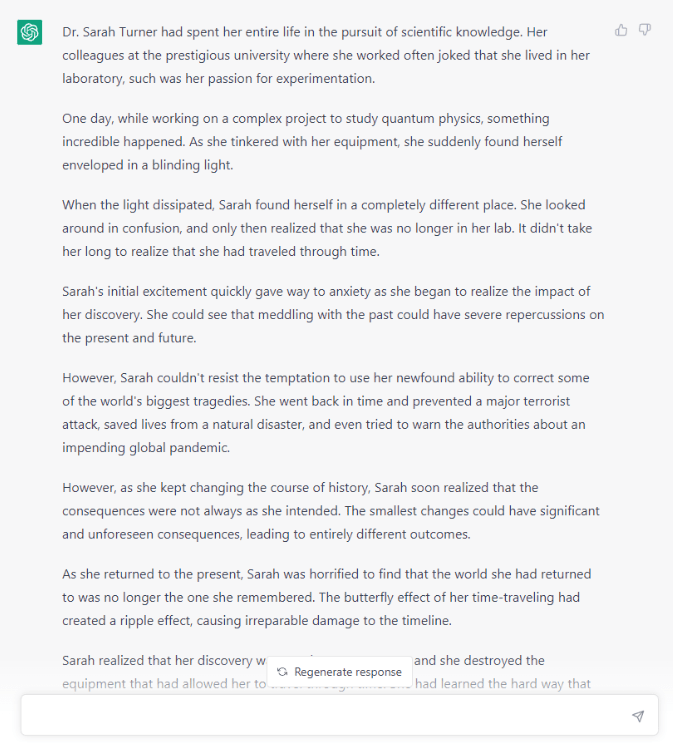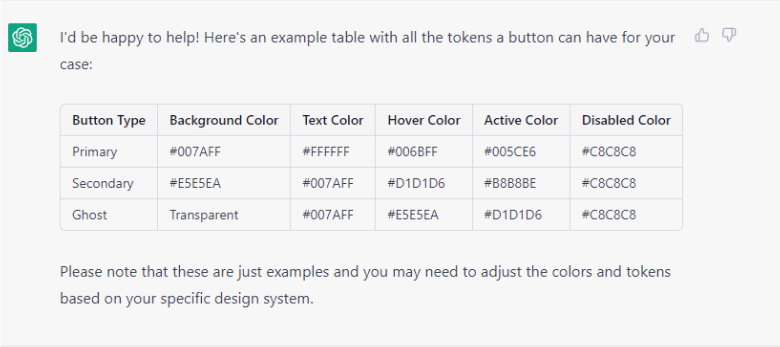Crafting Effective Prompts for Improved Results with ChatGPT: A Guide

Ever since I started leveraging AI tools to increase my productivity, I've been crafting personalized prompts to streamline my workflow. If you're unfamiliar with the concept of prompts, don't fret - I'll provide an explanation below.
When it comes to working with ChatGPT, the key factor that sets you apart is your ability to come up with innovative prompts. Although there are numerous prompt lists available online that people generously share, the crucial aspect is identifying our specific requirements and creating prompts that cater to them.
Allow me to provide an alternative analogy - providing someone with a recipe and asking them to cook it is similar to giving them a prompt, rather than explaining how to craft one.
Handing someone a recipe enables them to prepare the dish, but imparting fundamental knowledge about cooking allows them to comprehend the process thoroughly, leading to significantly superior outcomes.
This article aims to equip you with techniques for enhancing your creativity while crafting prompts. The objective isn't to simply provide you with a set of prompts and urge you to experiment with them, but to demonstrate effective methods of interacting with ChatGPT, thereby increasing your productivity with the tool.
What exactly is a prompt?
A prompt is a concise statement or inquiry employed to elicit various outputs, such as images, text, videos, and Figma screens.
When it comes to ChatGPT, a prompt refers to a brief text used as a foundation for generating additional text. This text could range from a question to a statement to a solicitation for information.
By adhering to the prompt, ChatGPT produces text pertinent to the subject matter.
Suppose you intend to draft a product description for a novel app that assists young individuals in managing their salaries. In that case, you could furnish ChatGPT with a prompt like this:
"Compose a brief description for a novel app that aids young individuals in handling their finances by monitoring their expenditures and offering budgetary recommendations."
Upon receiving this prompt, ChatGPT will generate a product description that aligns with the details included within the prompt. The greater the amount of information provided in the prompt, the more precise the outcomes will be. For instance, specifying the key features of the app will yield more precise results that are tailored to your application.
"If you wish to view the prompt's outputs, here are the results:"
The difference between consultative and task-oriented prompts
ChatGPT prompts have two primary functions: consulting information and performing tasks. To use ChatGPT optimally, it's essential to comprehend the distinction between these two types of prompts.
A consultative prompt can be used to seek information from ChatGPT. For instance, you may ask ChatGPT to assist you in changing the color of a text in Figma, and it will provide a step-by-step guide. However, it's worth noting that the information provided by ChatGPT may not always be entirely accurate.
Task-oriented prompts, on the other hand, are utilized to instruct ChatGPT to execute specific actions. For instance, you can ask ChatGPT to draft an email notifying users that their next subscription payment is due next week, which can expedite the email writing process.
Employing task prompts can automate specific tasks, thus saving you time and effort. Consult information prompts can provide you with the information you require.
It's important to note that ChatGPT may not always comprehend every prompt accurately, resulting in incomplete or inaccurate answers. Despite this, ChatGPT can still be a valuable tool for product designers seeking to streamline their workflow and save time on various tasks.
The fundamental concept behind creating exceptional prompts.
Writing a clear prompt is essential to obtain accurate results from ChatGPT. It is important to communicate to ChatGPT exactly what we want it to do for us when we input text.
Let me provide an illustration. Suppose you are collaborating with a designer, and you request them to design a screen in Figma that aligns with your vision of a new cooking app. In this case, you can provide the following prompt:
Can you design a Figma screen for an app that teaches people how to cook?
We need an iOS app that teaches cooking to teenagers. The app should include step-by-step instructions for various recipes and be user-friendly. Can you create a design for this?
Could you develop an iOS application that teaches cooking to individuals, particularly teenagers who are interested in learning how to cook? The app should include written recipes, instructional videos, and a feature that allows users to list necessary ingredients. The UI should be straightforward and user-friendly.
The third example provides the most clarity and specificity, allowing the designer to accurately capture your vision. The same principle applies to prompts - the more detail and specificity included, the more accurate and relevant the results will be.
It is important to note that even with well-written prompts, ChatGPT may not always provide completely accurate results. Therefore, you may need to make manual adjustments and tweaks to the results until you are satisfied with them.
Having mentioned that, let's explore some tips that can assist you in creating effective prompts, leading to exceptional outcomes.
Different types of writing prompts and their examples
Below are examples and tips for writing effective prompts.
ChatGPT can behave professionally.
The expertise of ChatGPT can be beneficial to designers.
To effectively utilize ChatGPT, it is important to determine the desired outcome and the role you want the AI to play. For instance, when working on an app, you might need to create an email template notifying users that their credit card will expire soon.
When writing an email template to notify users about an expiring credit card, ChatGPT can be asked to act as a UX writer and generate the text. To ensure that the generated text is appropriate for the context and tone of voice, it's important to provide clear instructions to ChatGPT.
To leverage ChatGPT's professional capabilities, consider specifying the role you want it to play and the task you want it to perform. As an example, imagine needing to create an email template for an app that notifies users their credit card will soon expire. You could prompt ChatGPT to act as a UX writer and generate the text, providing context and desired tone of voice such as 'Write a friendly and informative email to the user explaining that their credit card will expire soon, and prompt them to enter the app and update their account information.
Using ChatGPT to create a table
Writing prompts for ChatGPT to create tables is an excellent way to utilize its capabilities. For instance, you can ask ChatGPT to generate a table listing all the tokens that a button can have in a design system. This table will help you comprehend the information more effectively.
Example:
As a UX designer working on a design system for a desktop app that includes three buttons: primary, secondary, and ghost, could you please generate a table with all the possible tokens for each button type using ChatGPT? This table will help me better understand the information and organize it effectively.
The result:
Writing prompts for ChatGPT to create tables is an excellent way to utilize its capabilities. For instance, you can ask ChatGPT to generate a table listing all the tokens that a button can have in a design system. This table will help you comprehend the information more effectively.
Example:
As a UX designer working on a design system for a desktop app that includes three buttons: primary, secondary, and ghost, could you please generate a table with all the possible tokens for each button type using ChatGPT? This table will help me better understand the information and organize it effectively.
The result:
ChatGPT can also be used to help organize information. By providing clear prompts, you can ask ChatGPT to generate outlines, summaries, and other structures that can help you better understand and organize your content.
ChatGPT for Information Management
As a product designer, you may frequently encounter the need to organize a vast amount of information in a specific manner, such as creating an effective information architecture. ChatGPT can automate this task, saving you the time and effort of doing it manually.
Here's an easy example:
Can you alphabetically sort these car brands for me: Toyota, Honda, Volkswagen, Ford, Chevrolet, Nissan, BMW, Mercedes-Benz, Hyundai, and Kia?
Shaping the tone of voice
When creating prompts for ChatGPT, you have the ability to shape the tone of voice. By specifying the desired tone, such as informal, humorous, optimistic, and so on, you can direct ChatGPT to generate text that matches the desired style.
ChatGPT can utilize its AI algorithms to produce text that matches the desired tone by giving clear instructions on the tone you wish to convey in your writing.
By instructing ChatGPT to write in a specific tone, you can ensure that the generated text reflects the desired tone. This feature enables you to maintain a consistent writing style that aligns with your company's tone, or when you need to write a message for a specific purpose, such as an error message, which requires a different tone than an email wishing the user a happy birthday.
If you wish to add a humorous tone to your ChatGPT-generated text, you can simply instruct it to do so. For instance, you can provide a prompt like, "Please generate text in a humorous tone," and the AI algorithms will automatically adjust the language accordingly.
You may utilize this set of tones of voice: Friendly, Playful, Professional, Elegant, Bold, Minimal, Nostalgic, Futuristic, Natural, and Emotional.
Teach the AI model to behave the way you want it to.
ChatGPT can be trained to generate specific outputs based on your desired results by providing it with examples.
By providing ChatGPT with a set of desired outputs, you can train it to identify the patterns and generate similar outputs when given new prompts
As an example, suppose you want ChatGPT to generate a new error message for a 404 error page. You can provide it with three example error messages that align with the style and tone you want, and then prompt ChatGPT to generate a new message that follows the same style and tone. By doing so, ChatGPT can learn from your examples and produce a new message that is consistent with your desired style and tone.
Split the task into two separate prompts.
Breaking down information into steps can be helpful when dealing with a lot of information.
Instead of requesting ChatGPT to write an email based on five samples, you can provide it with five emails that reflect your writing style. Then, for the subsequent prompt, you can ask it to generate an email based on specific parameters that you provide.
By breaking down the information into smaller parts, ChatGPT can process and analyze it more effectively. If you provide too much information at once, it can be overwhelming and hinder the system's ability to generate a response.
Request more than one result.
When requesting ChatGPT to produce multiple responses, it allows you to compare and contrast the different options, and choose the most suitable one. Typically, 3 to 5 outcomes provide a good balance between generating enough options and not overwhelming you with too many choices.
A good practice when using ChatGPT is to ask for 3-5 results to be generated, which allows you to easily compare and select the most accurate solution. However, be cautious about asking for a large number of results, such as 50, as ChatGPT may end up repeating the same responses
When it comes to writing prompts, iteration is essential.
Getting the desired output from ChatGPT prompts may require some iteration. Don't be discouraged if your first attempt doesn't work perfectly. Keep refining and experimenting with your prompts until you achieve the desired result.
Even if you get the output you want from ChatGPT, don't simply copy and paste it. You'll need to tailor it to your specific needs by adjusting the formatting, adding or removing information, or finding the right words to suit your purpose.
Consider ChatGPT as a source of inspiration and ideas instead of a direct answer to your problem.
Keep track of your successful prompts.
Saving a successful prompt can be beneficial for future use, as it can save you time and effort. Once you've found a prompt that generates the output you desire, be sure to save it for future reference. This way, you won't have to go through the process of creating a new prompt every time you need similar output.
To streamline the management of your prompts, consider creating an app using Glide. This will allow you to keep all your prompts in one place for easy access and reference.
To summarize
To improve productivity and efficiency while working with AI tools, it is important to craft effective prompts. To achieve this, one should master the basics of good writing and try out various prompt styles to gain a better understanding of how AI tools perceive them.
During my presentation, I introduced the concept of a prompt as my initial point and distinguished between two types of prompts: information consultation and task execution. It is crucial to identify which type of prompt you are given to ensure that you can provide the appropriate information or complete the task efficiently.
In our discussion, I covered the topic of prompt writing and emphasized the importance of incorporating essential details to achieve precise outcomes. Furthermore, I provided some useful tips for optimizing your interactions with ChatGPT, such as shaping the tone of your message and using tables.
Keep in mind that ChatGPT may not always deliver completely accurate results, even with excellent prompts, and you may need to make manual adjustments. Crafting a flawless prompt is like creating a perfect recipe - you need to add the right ingredients in the right proportions and bake them together to achieve the desired outcome. Even if you do everything correctly, you may still need to make some modifications or adjustments afterward to achieve the perfect end product.






Top comments (0)